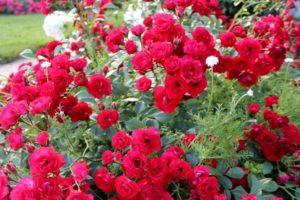Description and characteristics of the Pomponella rose, planting and care
Rose of the Pomponella variety has long won the hearts of flower growers. It conquers with its lush bloom and delicate aroma. For home breeding, the plant is chosen because of its unpretentious care and resistance to diseases. Bright nostalgic flowers adorn the flower bed from spring to late autumn. Bred in 2005 by German breeders, Pomponella is as popular today as other roses.
Description and characteristics of the Pomponella variety
The Pomponella rose variety belongs to the Floribunda class and is distinguished by abundant flowering.
The bush is erect, tall. Reaches 80 centimeters in height. The width of the bush is 60 centimeters. With good care and favorable growing conditions, the rose can reach up to 185 centimeters in height and 160 centimeters in width.
The flowers resemble pompons and are similar to peonies. On the brush, 5-7 globular flowers of dark pink color are formed. Their size, on average, is 4-5 centimeters in diameter. Each bud contains 80-85 petals. In some cases, the number of flowers in an inflorescence can reach 15 pieces. The foliage is dense, with a slight sheen, has a dark green color.
Rosa Pomponella is a multi-flowering one. Its bloom begins in late spring. The bush completely fades in the middle of autumn.
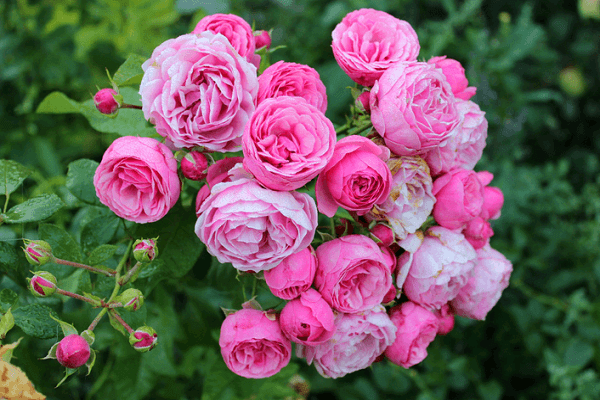
Pros and cons of rose
Like all plants, the Pomponella rose has its own advantages and disadvantages.
The variety owes its popularity to:
- rich color and shape of flowers;
- abundant long flowering;
- endurance;
- unpretentiousness;
- disease resistance.
Even heavy rainfall will not harm the elastic buds. And the shoots under the weight of the inflorescences can bend to the ground, therefore, it is necessary to organize support for the overgrown bushes.
The plant has few shortcomings, and they manifest themselves in the fading of flowers and intolerance to direct sunlight.
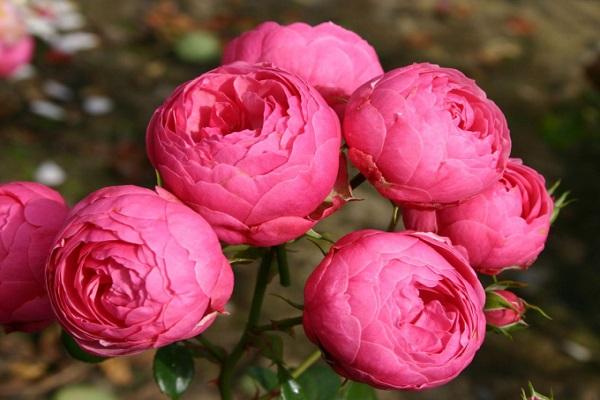
How to grow a crop correctly
The variety is very unpretentious, therefore, with proper planting and care, it is not difficult to achieve long and abundant flowering.
When is it better to plant
Planting is done in spring. The best time to disembark is from mid-April to mid-May. Autumn planting is possible, but has strict time constraints, since the plant needs to root. If you need to plant a rose in autumn, then you should do it no later than the end of September.
Preparing a bush for planting
If a seedling is purchased in a special container, its root system is sufficiently developed and does not require special preparation for planting.If you buy a plant with an open root system, before transferring it to the ground, you need to perform several simple steps:
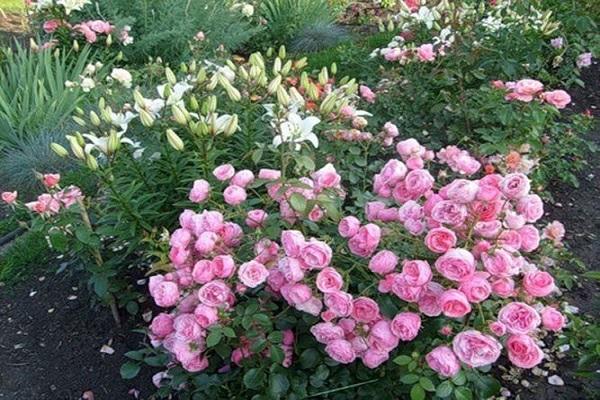
- shorten the roots by a third of the length;
- reduce the length of the shoots by 15-20 centimeters;
- cut off dry and dead parts of the plant;
- treat the roots with a fungicide solution for 20 minutes.
Treatment is necessary to prevent fungal diseases.
Drop off location
Pomponella is light-requiring, therefore, when choosing a place for planting, its illumination should be taken into account. It is important that direct sunlight does not fall on the bush in the afternoon - this can provoke burns on the petals. The south side is best suited for disembarkation.
Good air circulation will help the plant avoid diseases and pests. But do not place the bush in a draft. It is also better not to plant a rose in low-lying places - the stagnation of cold air will make it prone to disease.
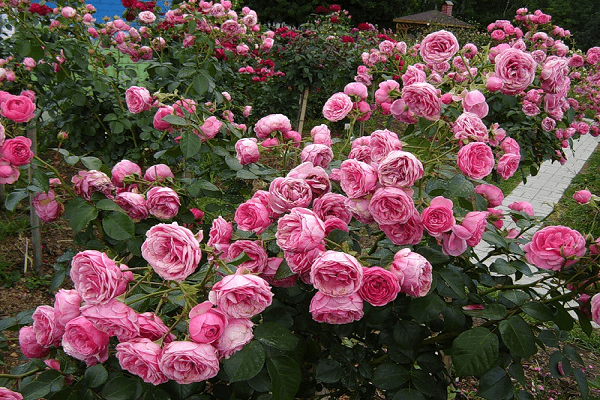
The soil for the Pomponella rose should be light, fertile and slightly sour. The acidity should be monitored carefully and the pH should not be exceeded above 6. The soil should not be waterlogged. If the groundwater at the site is high, then the plant will need drainage. If possible, it is better to plant the rose on a hill.
The soil must be prepared 2-3 days before planting. To do this, you need to dig up the area on the bayonet of the shovel and apply organic fertilizers.
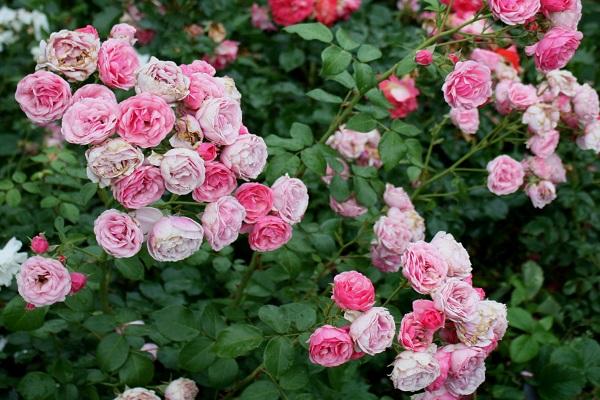
How to plant Pomponella
Planting a shrub requires compliance with some nuances. The algorithm of actions is as follows:
- Dig holes 30 centimeters deep.
- At the bottom of each hole, build an earthen cushion that will protect the roots from damage while falling asleep.
- Lower the plant into the groove. The inoculation site should be 3-4 centimeters below the edge of the hole.
- Cover the roots with earth with special care.
- Build an earthen mound around the bush, water.
- Spud the seedling 15 centimeters. Leave only 2-3 centimeters of the shoot above the surface. This will reliably protect from wind, and during autumn planting - from frost.
Important! Fertilizing the hole is prohibited. This can burn the roots of the plant.
The subtleties of flower care
Caring for a Pomponella rose requires a systematic approach and consists in regular watering, loosening and fertilizing the soil.
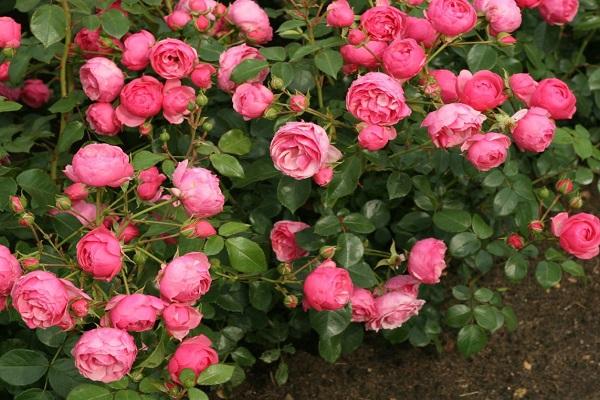
Watering and fertilizing
Pomponella is a moisture-loving plant. But excessive moisture can lead to the death of the bush. Watering is necessary only at the root, in a thin stream. The water should not be used cold. Better if it is defended. In dry summer weather, the plant needs 15-20 liters of water twice a week. Towards autumn, the frequency of watering decreases. In September, they should be completely stopped.
In the year of planting, fertilization under the bush is not required. In subsequent years, liquid organic fertilizers can be used for feeding. The frequency of top dressing during the flowering season should not exceed 6-7 times.
When the bush gets stronger - 2-3 years after planting, the use of mineral fertilizers is permissible. Their introduction depends on the season: nitrogen is used in the spring, and phosphorus and potash - in summer.
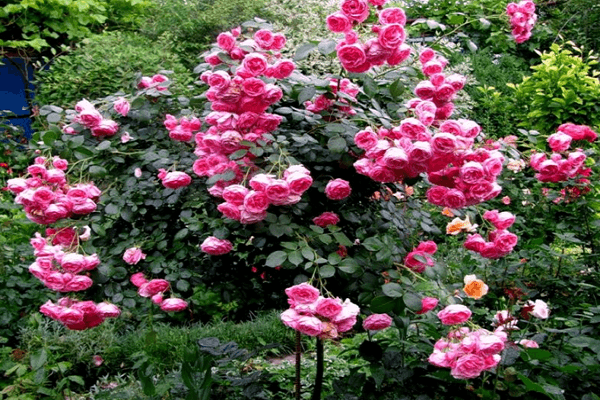
Loosening and weeding
When fighting weeds and loosening the soil, certain rules must be followed:
- weed regularly to prevent weed seeds from ripening;
- loosening of the soil is necessary some time after watering, rain or dressing;
- loosening should not be deep, so as not to damage the root system.
In the fall, after the cessation of watering, the soil under the young bushes should be loosened at least 1 time per month. With adult bushes, this procedure can be carried out just before the shelter for the winter.
Pruning
The pruning process depends on the purpose for which it is carried out.
In the spring, to form a bush, 2 to 4 buds should be left on the shoots. The rest must be removed. For early and abundant flowering, a cut is made over 6-7 buds. In summer, light pruning is used, in which dead inflorescences are removed.
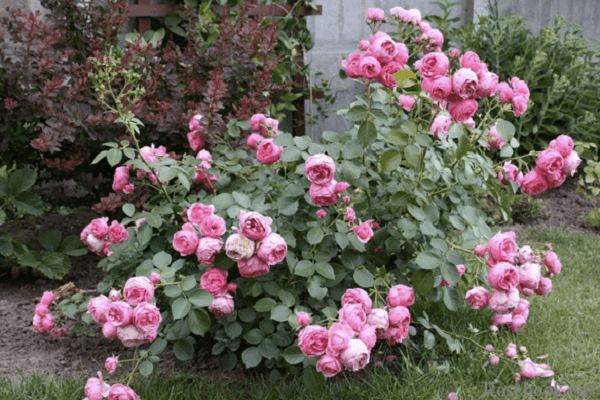
In the autumn, pruning is necessary for sanitary purposes: to remove diseased and damaged shoots, as well as to thin out overgrown bushes. Healthy shoots, in preparation for winter, are cut by 15-20 centimeters.
How to cover roses for the winter
Preparing a bush for winter requires a careful approach. To preserve roses in severe frosts, you must:
- Prune the bush.
- Spud the base with earth, compost or humus.
- Lay a layer of spruce branches between the bushes and on the plant.
- Install a frame at a height of 20-30 centimeters above the rose.
- Lay insulation on the frame and cover with polyethylene.
When hiding, it is important to leave windows for ventilation.
Preparation for wintering is carried out when the temperature drops to -7 ° C. With spring warming, the roses are first ventilated, and after adaptation to weather conditions, they are fully opened.
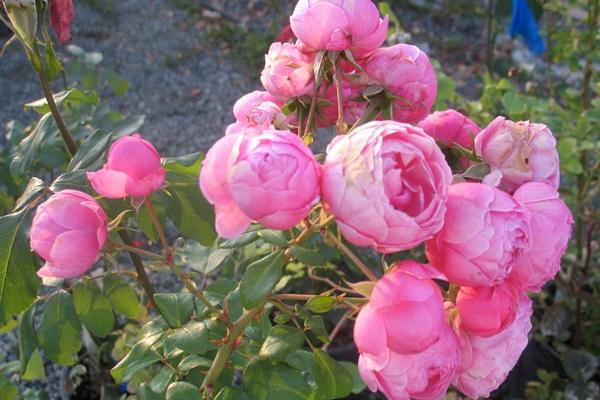
Diseases and pests
The Pomponella rose variety is highly resistant to diseases and pests. The plant is not prone to fungal diseases and black spot. In rare cases, the rose may suffer from powdery mildew.
Breeding methods
The rose is propagated at home by grafting. For this, a stalk is cut from the shoot at an angle of 45 degrees. Its length should be no more than 8 centimeters. All leaves and thorns are removed from the cut cutting. Before planting in fertile soil, it must be treated with a growth stimulator. This promotes better rooting.
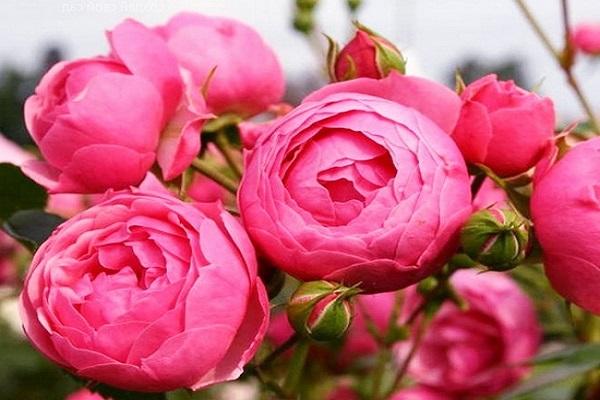
How it is applied in landscape design
Pomponella is most commonly used in landscape design as a curb plant. Also, it often becomes the center of flower arrangements. But it is most effective in a single planting, in the form of a trunk. A special growing technique allows you to decorate a flower bed in this way, as a result of which the rose looks like a flowering tree.
Also, the variety is often used in the design of arches and trellises. With support and the correct garter, Pomponella stretches out like a climbing rose.
Floribunda Pomponella are quite unpretentious and hardy roses. With proper planting and care, they will delight with abundant flowering from early spring to late autumn.
